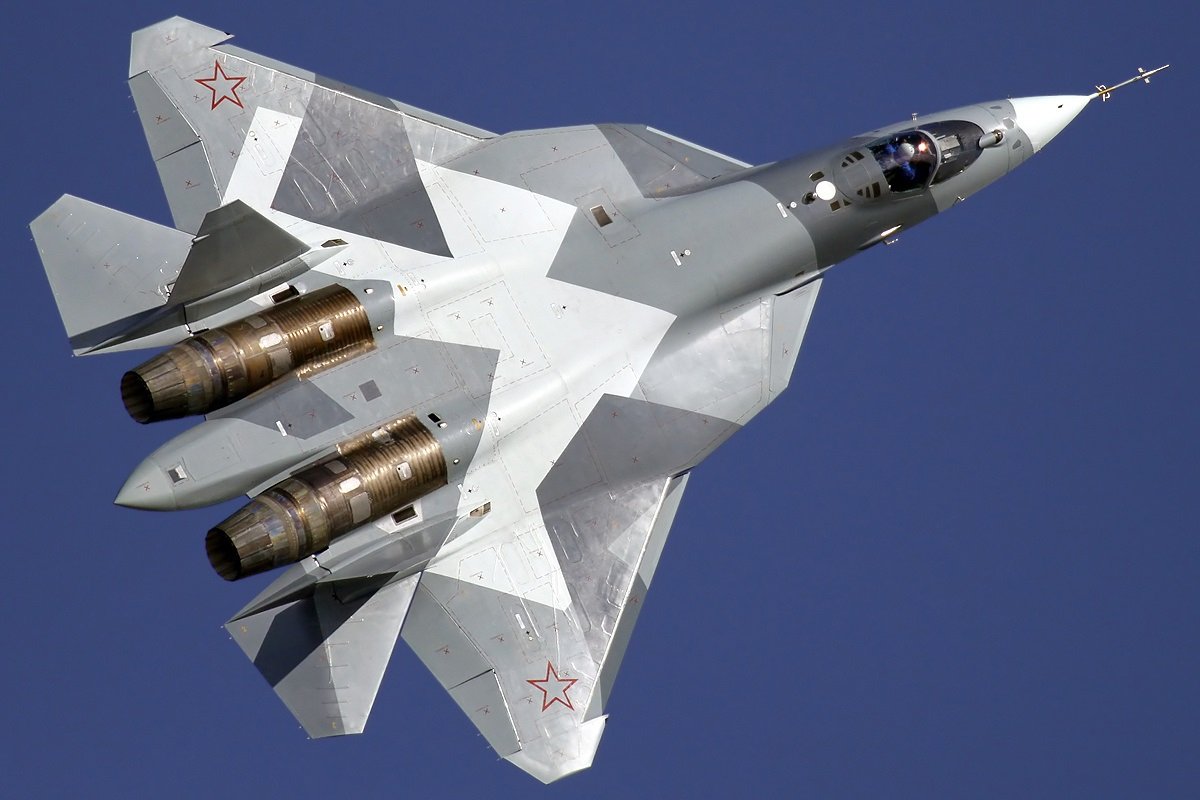The Sukhoi Su-57 – Russia’s single-seat, a twin-engine multirole fifth-generation jet fighter that was designed for air superiority and attack operations – could soon be flying high over Southeast Asia.
According to recent reports, five countries in the region have expressed interest in the advanced stealth aircraft that is capable of destroying all types of air, ground, and water-based targets.
“We are holding negotiations with several countries,” said Aleksandr Mikheyev, CEO of the state arms seller Rosoboronexport, according to a report from Tass. “We see requests and interest. Southeast Asia, four or five countries [show their interest].”
Su-57: A Quick Primer
Development on the advanced Su-57 began in 2002, but the aircraft only took its first flight on January 29, 2010. The Su-57 is essentially an evolution of the Su-27 Flanker’s shape, modernized for low radar observability while providing even greater maneuverability. It was also the first Russian combat aircraft to utilize stealth technology, whilst it was also designed to have supercruise, supermaneuverability, and advanced avionics to overcome attacks from the prior generation fighter aircraft as well as ground and naval defenses. The aircraft also has supersonic cruise speed, internal weapons bays, radio-absorbing coating, and the newest onboard equipment.
The Russian Air Force only took delivery of the first of the fifth-generation aircraft last year. Russia’s Aerospace Force has announced that it is on track to acquire twenty-two Su-57 fighters by late 2024, and the fleet is set to increase to seventy-six in total by 2028.
Stealth Isn’t Cheap
The cost has remained an issue for Moscow, however. At a rough per-model cost of around $40 million, the Su-57 packs sophisticated avionics, class-leading aerodynamics, and a formidable weapons suite into a relatively affordable package, but the Su-57 project could still occupy a sizable chunk of Russian defense spending.
The Kremlin has been keen to offset as much of these costs as possible through a series of high-profile export contracts. It now appears that could include five still-to-be-named Southeast Asian countries. One issue to consider is how Beijing might respond to having its regional rivals armed with the advanced aircraft.
Drone On
The fifth-generation fighter jet was successfully tested in combat conditions in Syria, and Russia has continued to increase its combat capabilities.
Russia recently announced that it will test the Su-57 with four Okhotnik heavy strike drones. The S-70 ‘Okhotnik’ developed by the Sukhoi Design Bureau is reported to feature stealth technology including a flying wing design without a tail to reduce its radar signature. According to the data of open sources, the drone has a take-off weight of 20 tonnes and can develop a speed of around 1,000 km/h.
“Currently, the options of controlling strike drones from a Su-57 cockpit are being worked out. A fighter jet is expected to carry from two to four Okhotnik drones,” a source in the domestic aircraft-building industry told Tass on Tuesday.
Serial deliveries of Okhotnik heavy strike drones to the Russian troops are scheduled to begin from 2024.
Peter Suciu is a Michigan-based writer who has contributed to more than four dozen magazines, newspapers and websites. He regularly writes about military small arms, and is the author of several books on military headgear including A Gallery of Military Headdress, which is available on Amazon.com.

